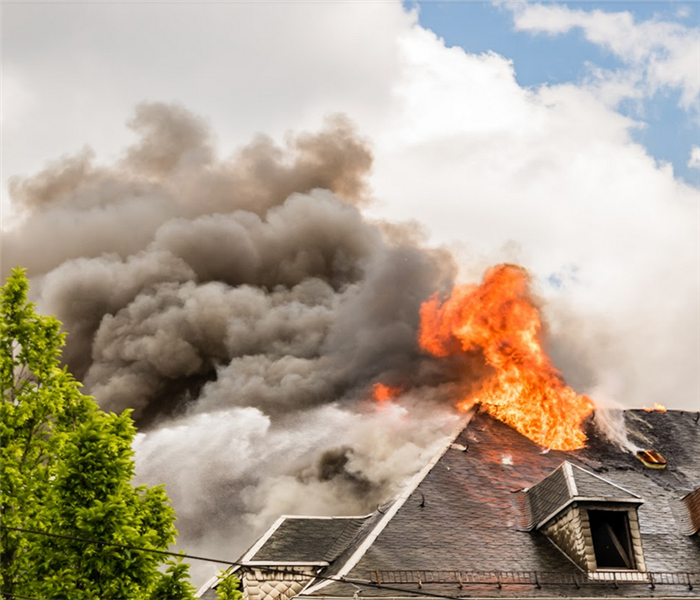Fire Restoration Focuses on Smoke Migration in Wilmington Homes
4/10/2022 (Permalink)
 Smoke and fire can move through your property quickly while causing damage. Contact SERVPRO to assess the situation and formulate a remediation plan.
Smoke and fire can move through your property quickly while causing damage. Contact SERVPRO to assess the situation and formulate a remediation plan.
Smoke Behavior Impacts Several Surfaces Before Wilmington Fire Restoration
No two fire losses are the same, but the behavior of smoke rarely changes. Under specific conditions, smoke travels rapidly throughout the property, impacting several surfaces and cycling in an active current until extinguishing the fire.
The Spread of the Fire Disaster
Among the greatest contributing factors to the complexity of fire restoration for Wilmington homes is how far-reaching smoke damage becomes. During the disaster, fire loss effects spread quickly through available pathways like the HVAC system and doorways. The greater the recovery area, the more involved the restoration.
Turbulence of Convection
As the heat and temperatures fluctuate and change during active fire damage events, the produced smoke travels in various paths to affect multiple property areas. Convection currents force smoke under pressure horizontally and through a turbulent cycle, impacting several structural surfaces simultaneously.
Type of Smoke Damage
While the movement and the pressures of smoke damage can immensely determine the cleaning difficulties restorers have in the property, the consistency and composition of this damage play a part as well. There are multiple kinds of smoke damage possible in residences, including:
- Wet Smoke – Wet smoke develops from slow-burning and lower-heat fires smoldering in the house. This generates a higher concentration of smoke solids to impact building materials.
- Dry Smoke – High heat fires produce a thin and manageable soot deposit but often with greater structural concerns.
- Protein Deposits – Grease fires produce thick, formidable, moist smoke damage deposits on counters, cabinets, and wall assemblies.
- Oil Puffback – Oil furnaces are a popular alternative to electric heat, but when micro-explosions occur in the ignition chamber, the result can be ionized soot damage.
The behavior and movement of smoke damage in your home can vastly impact the ease of cleaning and restoration. Our SERVPRO of Hockessin / Elsmere team works to provide rapid mitigating solutions, including soot management for homes and businesses as soon as we arrive. Call today at (302) 992-0104.






 24/7 Emergency Service
24/7 Emergency Service